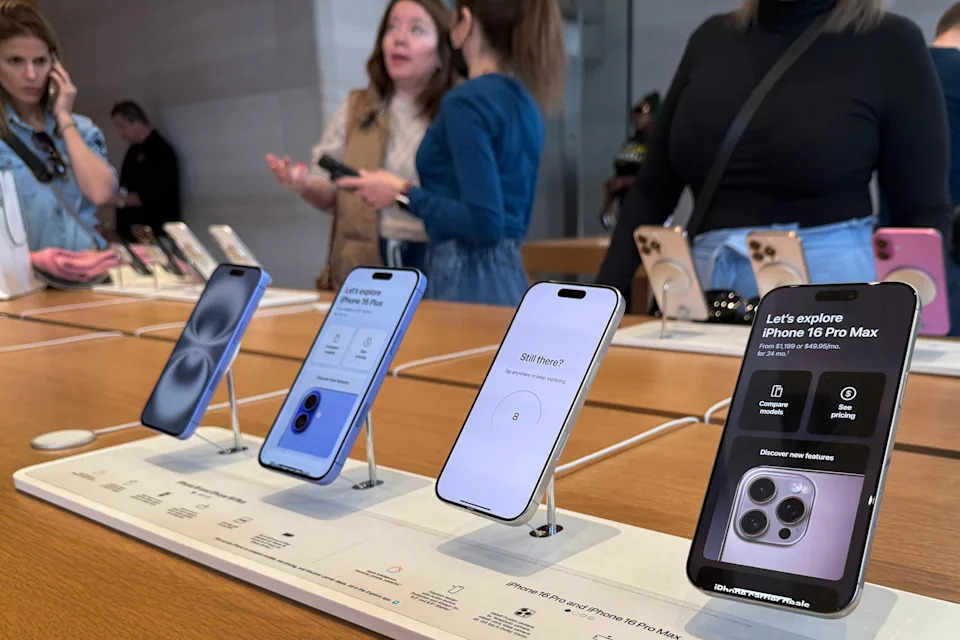News
If Trump gets his way, could iPhones made in the US really cost $3,500?
While iPhones have always been costly, experts agree a new tariff environment and pressure from President Donald Trump to make them in the U.S. are likely to drive their prices higher.
“I have long ago informed Tim Cook of Apple that I expect their iPhone’s that will be sold in the United States of America will be manufactured and built in the United States, not India, or anyplace else. If that is not the case, a Tariff of at least 25% must be paid by Apple to the U.S.,” Trump wrote in a social media post May 23.
Experts disagree, however, on how much of a price increase would result from tariffs and how long it could take before Apple starts manufacturing products in the U.S.
More: Trump threatens steep tariffs on European Union goods, targets iPhones; live updates

How much will an iPhone cost?
Dan Ives, global head of technology research at financial services firm Wedbush Securities, estimates iPhones could run consumers $2,300 when tariffs are taken into account – a significant increase from Apple’s newest model’s $1,199 price tag – but a far cry from the $3,500 he estimates it would run consumers if it was made in the U.S.
Drew DeLong, who leads the Geopolitical Dynamics Practice at Kearney, a global strategy and management consulting firm, said a price increase of $100 to $200 after tariffs is more realistic.
DeLong said, "If I put myself in Apple shoes, I would be less concerned about the reciprocal tariffs, given that they've been told that they're largely exempt from those," and more concerned with the ongoing U.S. investigation into imported semiconductors , a technology largely produced overseas and needed to make iPhones.
If Apple shifts production to the U.S., DeLong said it will have the cost and availability of energy and skilled workers to consider. In this scenario, potential tax cuts and deregulation legislation could also affect the company's margins over the next few years, he said.
Will Apple shift production to the US?
To Ives, the idea of iPhones produced in the U.S. is “a fairy tale that is not feasible." He said it would realistically take Apple five to 10 years to shift production to the U.S.
While Apple has promised to invest $500 billion in the U.S. over the next four years, Ives said the investments are in primarily AI-driven initiatives.
"We see no chance that iPhone production starts to happen in the US in the near-term given the upside down cost model and Herculean-like supply chain logistics needed for such an initiative," Ives wrote in a note.
DeLong said it won't necessarily take Apple 10 years to bring a site online in the U.S., citing the company's plans to open a server manufacturing facility, which plays a key role in powering Apple Intelligence, in Houston, Texas, in 2026.
"I can tell you from anecdotal conversations with folks close to the administration, they want projects built in these four years," DeLong said.
During his first administration, Trump claimed Apple's CEO Tim Cook promised to build three plants in the U.S. At the time, the president granted the company tariff exemptions, but the company built zero smartphone factories in the U.S. during his first four years in office, according to multiple media outlets .
Apple did not respond to USA TODAY’s request for comment.
How could Trump target Apple?
In April, the Trump administration issued reciprocal tariff exemptions for smartphones through a presidential memo clarifying an executive order and updated guidance from U.S. Customs and Border Protection.
Apple had already made plans to shift some production of U.S.-bound iPhones from China to India to mitigate tariff effects. On a recent earnings call, Apple CEO Tim Cook said the company aims to have the majority of iPhones sold in the U.S. imported from India before the end of this year.
Nikolas Guggenberger, a law professor at the University of Houston, said Trump’s comments on Truth Social May 23 serve as an announcement of his intention to do something, but not formal policy.
“It’s just like the president could be giving a speech and announcing a new policy or intent to implement a policy,” Guggenberger said. “He still needs to rely on formal channels.”
Perhaps the most straightforward way for Trump to make Apple pay more tariffs for their iPhones, he said, would be for the administration to drop the reciprocal tariff exemptions for smartphones all together.
But if Trump wanted to specifically target Apple, Guggenberger said the president could put tariffs only on smartphones coming from India, where Apple plans to manufacture most of its U.S.-bound product.
Both strategies would also affect other phone manufacturers.
Reach Rachel Barber at rbarber@usatoday.com and follow her on X @rachelbarber_
Contributing: Reuters
This article originally appeared on USA TODAY: Could iPhones really cost $3,500 if Trump gets his way?

